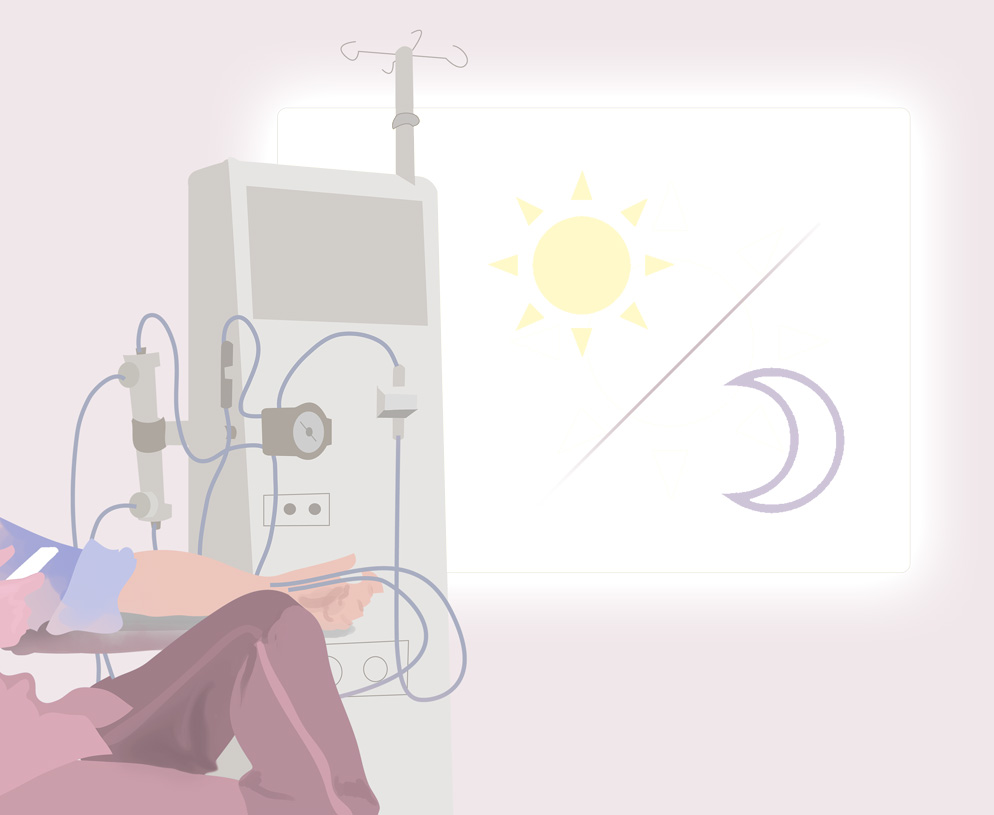It is important to keep your kidneys healthy because they play an essential role in your body! The kidneys are two bean shaped organs that keep your body in equilibrium. Your kidneys receive 20% of the blood that your heart pumps every minute and excretes any excess water and electrolytes through your urine. As the health of your kidneys start to decline, your kidneys are unable to filter your blood and your body starts to retain water and waste. When you’re diagnosed with Chronic Kidney Disease (CKD), it means your kidneys have reduced function for over three months.

Diagnosed with CKD: Now What?
Your nephrologist will order tests and labs to monitor you creatinine, BUN, and glomerular filtration rate (GFR) to track the progression of your CKD. Your GFR determines which stage of CKD you are at. At CKD Stage 5, when your GFR is less than 15 mL/min per 1.73M^3, you have reached End Stage Renal Disease (ESRD). As your CKD progesses your nephrologist will consult with you regarding your options for a transplant or the two types of dialysis.
Understanding Dialysis
Dialysis is a renal replacement therapy that filters your blood when your kidneys can’t. There are two types of dialysis, Hemodialysis and Peritoneal Dialysis.
Hemodialysis
Hemodialysis uses an apparatus with four different components to filter your blood. Your bloodstream is accessed using a catheter via a fistula or a graft. Your blood is taken out of the body, cleaned, and returned. Hemodialysis can be performed at home or in a dialysis unit. Choosing between either option depends on your preference, however, only an AV fistula or graft will be placed for home hemodialysis, and not a catheter line. Due to a high risk of infection, catheters need to be accessed by a technician or nurse.
With home dialysis, you have the pleasure of doing your treatment in the comfort of your own home. A nurse will assist and train you and your family members to use the apparatus. Home dialysis can either be performed daily with shorter treatment times, or three times a week with longer treatment times. But it is important when considering home dialysis that you have a treatment partner who can cannulate the AV fistula or graft.
At a dialysis unit, a multidisciplinary team including a nephrologist, nurse, and dietician will be assigned to you to assist you in your treatment and to monitor your labs on a monthly basis to ensure that they meet a set a guidelines. You will be receiving a more traditional treatment regimen 3-4x weekly.
Peritoneal Dialysis
Peritoneal dialysis is another type of dialysis to consider if you’ve been diagnosed with CKD. It uses the peritoneal membrane from the abdominal cavity. This type of dialysis uses a surgically placed catheter into the abdomen and is usually performed at home by the patient or family member/caretaker. There are two types of peritoneal dialysis, Continuous Ambulatory Peritoneal Dialysis (CAPD) and Continuous Cycling Peritoneal Dialysis (CPPD), and both require a surgically placed catheter.
CAPD is machine free and uses a catheter that is surgically placed into your abdomen on one end and a dialysate solution bag on the other. The solution contains a high concentration of glucose that draws water and other electrolytes from your blood using the peritoneal membrane in your abdomen. The waste from your blood is drained. This process is repeated several times and can be performed anywhere!
CCPD uses a small cycler machine and is often performed at night while the patient is sleeping, as the process takes about 8-10 hours. Another difference to consider is that CCPD uses a dialysis solution with varying amounts of glucose. Talk to your nephrologist to about all your options for dialysis and to find the best fit for you.
If you have any questions about your kidneys, please call us at (714) 435-0150 to schedule a consultation!
